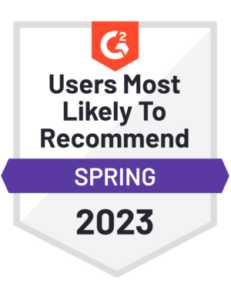If we’re being completely honest, learning development and in the professional sector is always an up-hill battle. There is limited time, lost to do and, often from the perspective of both management and employees it can be seen as “taking time away from work”.
It looks good on paper but how can that translate in to valuable, worthwhile outcomes? What if there are ways to approach learning and development that make the practical connections, outcomes, and value to working-life glaringly obvious?
The reality is that there are several ways to do this, the trick to this is often how learning and development challenges are conceptualised, framed and executed.
In this article we will explore 2 such pedagogical approaches you should be using in your professional learning and development tool kit; Problem-Based Learning (PBL) and Project-Based Learning (also PBL).
Though they share an acronym, their approaches, and applications in the learning experience platform (LXP) landscape offer distinct benefits and challenges. Today, we’re diving deep into these methodologies, comparing them to real-world scenarios, and offering a practical guide on integrating them into your online learning strategy.
Let’s get started.
What’s in a Name? Defining PBLs
Problem-Based Learning: A Snapshot
Problem-Based Learning focuses on the learner tackling a problem without a predefined solution, mirroring real-world scenarios where answers are not readily available.
This approach encourages critical thinking, problem-solving, and research skills. Imagine a group of learners in a professional training setting presented with a declining sales trend.
They must analyse data, consider market factors, and propose innovative strategies to reverse this trend. This is PBL in action: real, messy, and incredibly engaging.
Project-Based Learning: The Big Picture
Project-Based Learning, on the other hand, is all about diving into a project with a defined end-goal but flexible paths to reach it. It’s about applying knowledge and skills to achieve a tangible outcome.
Picture a team developing a new customer onboarding process as their project. They research, design, test, and refine, employing a range of skills from technical know-how to customer empathy.
The project’s success is measurable, and the learning is in the journey as much as the destination.
The Difference Between Problem-Based Learning vs. Project-Based Learning
While both forms of PBL promote active, engaged learning, their contexts and applications diverge significantly.
- Problem-Based Learning thrives in environments where analytical thinking, adaptability, and problem-solving are key. It’s particularly effective in professional training programs focused on critical thinking and decision-making skills, such as management consulting or healthcare.
- Project-Based Learning shines in scenarios requiring a blend of skills to create or improve something tangible, like a product, service, or process. It’s ideal for fields like software development, marketing, and design, where the project’s outcome is paramount.
Bridging Theory and Practice: PBL in the Real World
Let’s face it, the professional world is a complex jigsaw of projects and problems. Problem-Based Learning mirrors the unpredictability and complexity of real-life challenges, akin to a start-up navigating unforeseen market changes.
Project-Based Learning, meanwhile, reflects the structured yet creative approach needed to launch a new product or revamp a service within established companies.
Both strategies foster a culture of continuous learning and adaptability, critical in today’s fast-paced business environments. They encourage professionals to become lifelong learners, constantly evolving to meet the challenges and opportunities of the future.
Moreover, using one of these approaches lest you disguise a real business challenge as a collaborative, team-focused exercise. By removing the context of “this is a real challenge we need to solve” you can encourage people to think outside the box, innovate, and take (calculated) risks. This is another way of saying that you can use PBL scenarios to generate real solutions to real challenges.
The outcomes might not be the exact solution you use, but they can provide a means of uncovering ideas and approaches that otherwise might never be discussed – they can become a valuable way of not only learning but working on organizational challenges.
Crafting Your PBL Experience: A Practical Guide
Ready to implement PBL in your learning strategy? Here’s a concise guide to kickstart your journey, leveraging online technologies:
- Identify the Learning Objectives: Start with the end in mind. What skills or knowledge should learners gain?
- Choose Your PBL Type: Decide between Problem-Based or Project-Based Learning based on your objectives.
- Design the Challenge: For PBL, create a real-world problem without a clear solution. For Project-Based Learning, define a project with specific goals.
- Select the Right Tools: Utilize an LXP that supports collaborative work, real-time feedback, and integrates with tools for research, project management, and communication.
- Facilitate, Don’t Dictate: Guide learners through the process, offering resources and support rather than direct answers.
- Assess and Reflect: Include reflective assessments to ensure learners can apply what they’ve learned in real-world scenarios.
Case Study: How Solita’s Product Training Levelled Up by Going Online
Embracing PBL With Technology
Incorporating PBL into your learning strategy, especially within an online setting, can seem daunting. Yet, with the right tools and a clear focus on your learning objectives, it becomes an invaluable method to prepare professionals for the complexities of the modern workplace.
Digital platforms and LXPs offer the flexibility, collaboration, and scalability needed to make PBL a success, ensuring that learning is not just an activity but a fundamental part of professional growth.
Whether you’re solving the next big problem or embarking on a ground-breaking project, the essence of PBL lies in its ability to mirror the real-world challenges professionals face every day. By adopting these strategies, you’re not just training for the job at hand; you’re cultivating a mindset geared towards continuous improvement and innovation.
So, are you ready to take your professional training to the next level with PBL? The journey is challenging but rewarding, and the skills acquired are your passport to success in the ever-evolving professional landscape.







